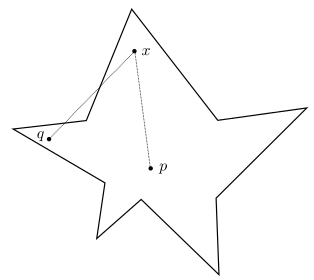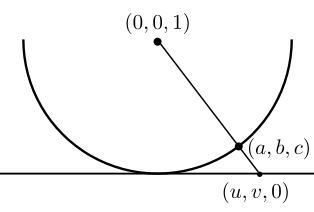Smooth vs. Analytic Functions
We denote the coordinates on as and a point .
Def
A real-valued function is said to be at if its partial derivatives
of all orders exist and are continuous at . It is or smooth if it is for all .
Some examples include:
- Polynomials are over
- The function given by is but not at .
- The function given by has derivative , so is but not at .
We define a neighborhood of a point in to be an open set containing the point. A function is real-analytic at if in a neighborhood of it is equal to it’s Taylor series at :
All real-analytic functions are necessarily because the convergent power series can be differentiated. For example, if
then we can differentiate to get
However, not all functions are real-analytic. For example consider the function
Notice that for
Thus, if we let , (making use of L’Hopital’s rule)
Hence, for all . Therefore, is but the Taylor series at the origin is zero in every neighborhood, i.e., is not real-analytic.
Taylor’s Theorem with Remainder
We say a subset is star-shaped with respect to if for every , the line segment from to lies in . For example:

The set is star-shaped with respect to , but not .
Taylor's theorem with remainder
Let be a function on an open subset of star-shaped with respect to a point in . Then there are functions such that
Proof: Notice that for any the line segment , lies in since is star-shaped with respect to . If we differentiate using the chain rule
If we integrate both sides from 0 to 1,
Letting
gives the result.
Problems
1.3. A diffeomorphism of an open interval with
Let and be open intervals. A map is called a diffeomorphism if it is bijective and has a inverse . Show that any two finite intervals are diffeomorphic.
Answer: Let and define by . Notice that is since
are continuous. Moreover, is bijective with inverse
and
Therefore, is a diffeomorphism. Since and are arbitrary, it follows that all finite intervals are diffeomorphic.
1.5. A diffeomorphism of an open ball with
Let be the origin and be the open unit disk in . To find a diffeomorphism between and , we identify with the -plane in and introduce the lower open hemisphere
in as an intermediate space. Note that the map
is a bijection.
(a) The stereographic projection from is the map that sends a point to the intersection of the line through and with the -plane. Determine the map and it’s inverse.

Answer: We seek the map for . By similar triangles (working in the -plane), notice that
Solving for we get that . We repeat this in the -plane to get . Therefore, is given by
We now seek the inverse map . Notice that implies that . Hence, solving for and gives us
(b) Composing the two maps and gives the map
Find the formula for and conclude that is a diffeomorphism of the open disk with .
Answer: Notice that
One may verify that and are .